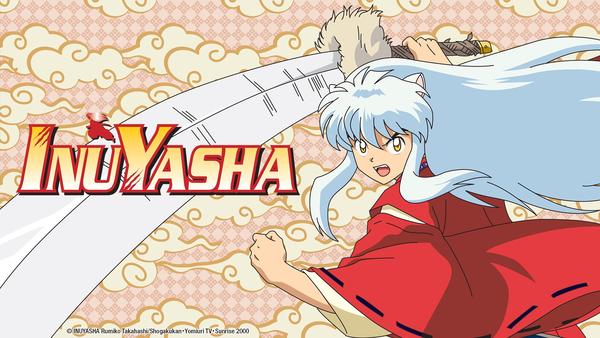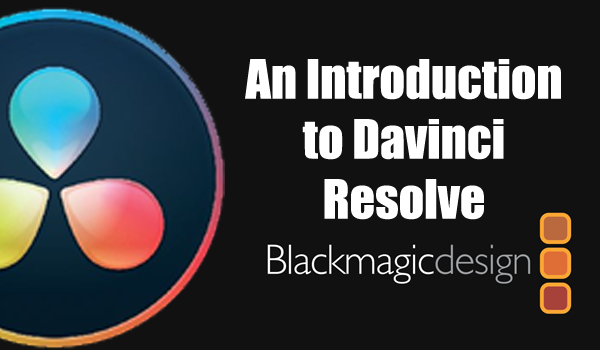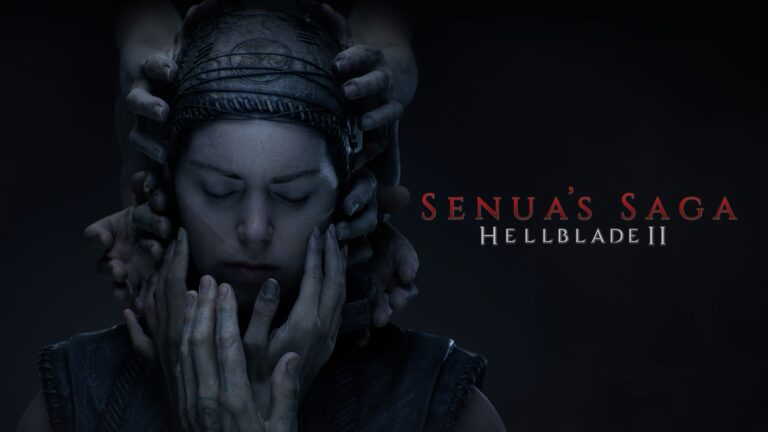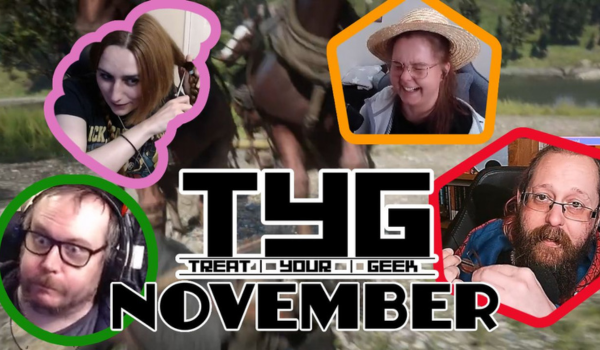
The armies of Hell are poised to invade, the gates are about to swing open, and humanity’s only hope is a child of both worlds; a warrior so fierce that even the Devil may cry.
I am a massive Devil May Cry fan but even I was wary when a Netflix show was announced. Capcom have tried adapting a lot of their properties to Netflix shows (Onimusha, Dragon’s Dogma) and they have been hit and miss so far. This isn’t even the first time that Devil May Cry has had the anime treatment, but while the series was faithful, it was slow, dull and, to be honest, totally forgettable. However, this new Devil May Cry series is headed by Adi Shankar, producer of Netflix’s Castlevania series, so will Netflix manage to find a nice balance this time?
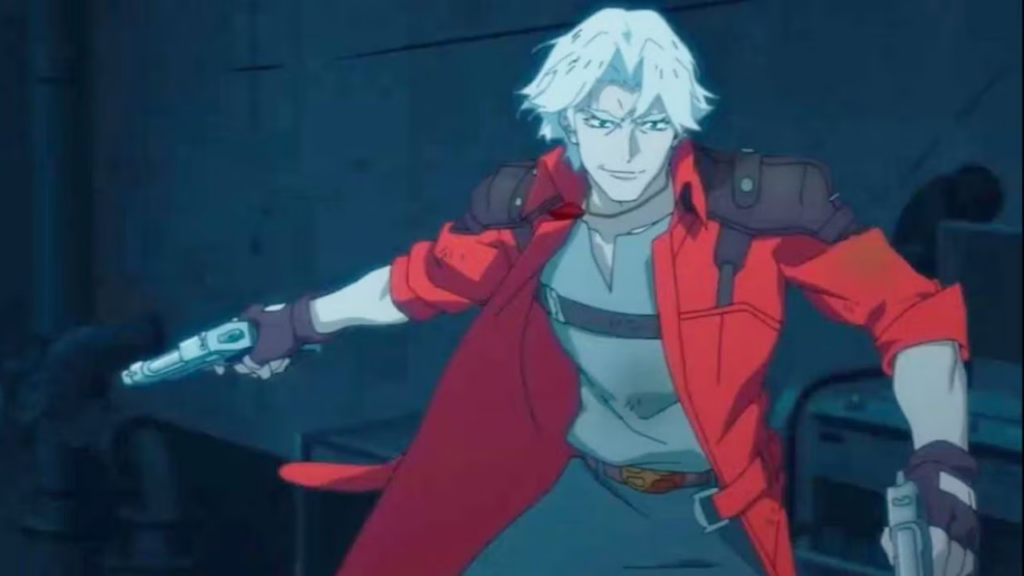
So where in the DMC game’s canon is this series set? Well, it’s not. While it pulls heavily from plot elements from both Devil May Cry (1) and 3, it is set in its own canon, joining Castlevania in what is known in-house as “The Bootleg Multiverse.” This means that extensive knowledge of the games is not necessary for viewing. Think of the Resident Evil’s plot relationship between games and movies and you get the idea.
I think the series borrows elements from all the games in the series in one way or another. Aside from ninja theory’s DmC: Devil May Cry I believe, but I have blocked most of that from memory so I could be mistaken.
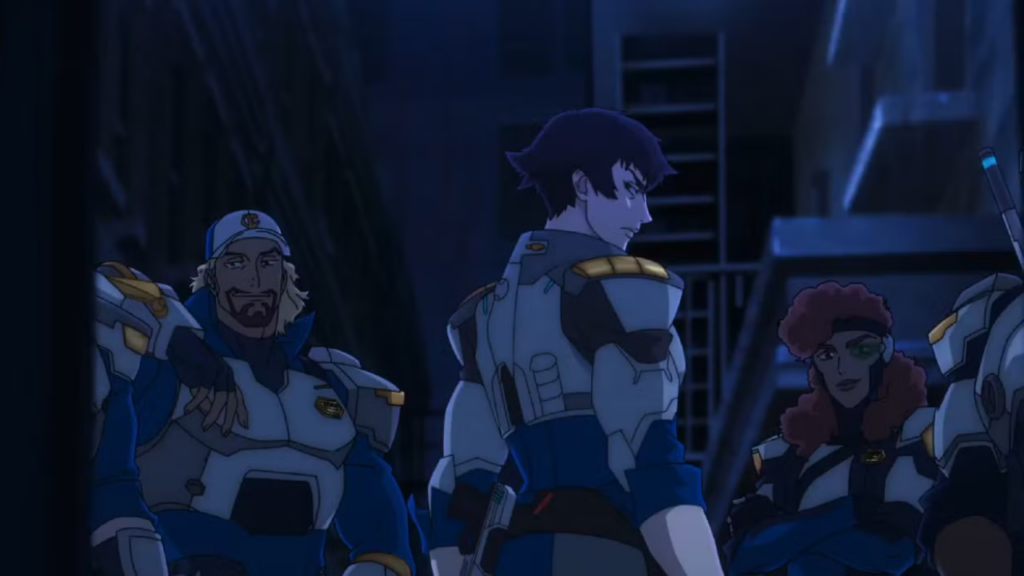
The Dante we are presented with here is a younger Demon Hunter, aware of his abilities but unwilling to acknowledge his demon heritage. Confident but still rough around the edges, wiping out demons with ease but flubbing the one-liner. Portrayed by Johnny Yong Bosch this is a game-accurate portrayal of the series’ hero. A hero with no idea of his true strength as he keeps breaking guns with his grip and dances his heart out to DDR even though he scores no points.
On the flip side is Lady, the other demon hunter playing our secondary protagonist. First introduced in Devil May Cry 3 she is so far removed from her game counterpart. Rather than the solo hunter she is part of a government black ops devil hunter team called DARKCOM and still goes by her birth name of Mary Arkham. The only connective origin was her patricide, although her reasons were different, so purists may take issue with the handling of her. The main villains’ hench-demons are bosses (or derived from) from each game, almost one for each game (Devil May Cry 2 is not represented here but more on that later).

The plot kicks off with a break-in at Vatican City, where the villain of the series the “White Rabbit” steals a holy relic, the sword of the demon knight Sparda the “Force Edge” which can be used to bring down the barrier separating the human and demon worlds. The robbery and subsequent explosion make world news and footage recovered by the Americans directs them to seek out demon hunters, more aptly our boy Dante. He is the son of Sparda and alongside his twin brother Vergil (believed to be deceased) was given two halves of a pendant that can complete the ritual to unlock the barrier.
This leads to a race to possess the amulet between the demonic forces of the White Rabbit and the US government, with Dante stuck in the middle. The government naturally being led by an overly religious and righteous Vice President, because of course they believe it’s safest in their hands. This leads to the crux of my criticisms I have with the series. Dante spends too long fighting regular humans instead of demons. That or he’s incapacitated somehow and the focus switches to Lady or the White Rabbit.
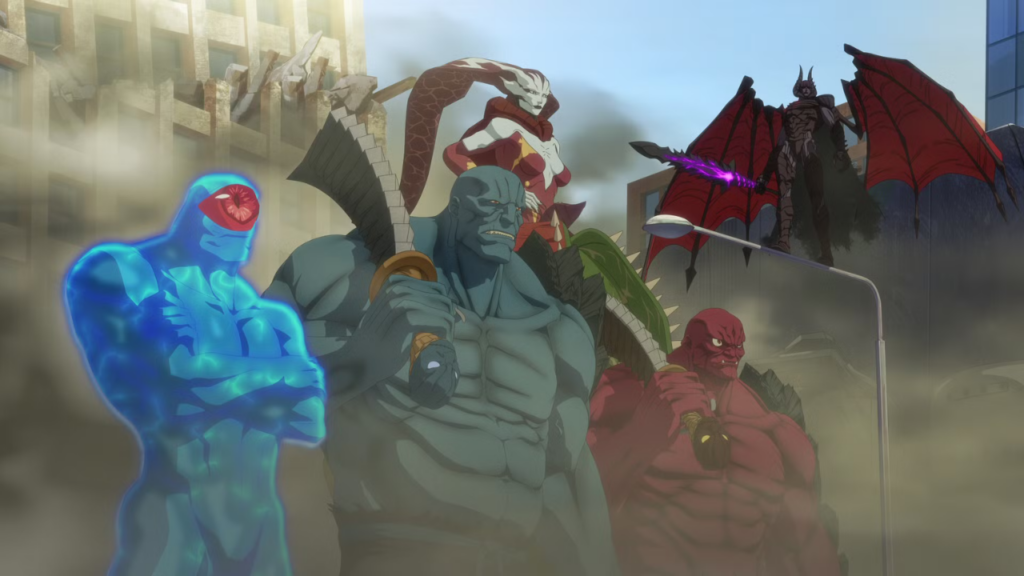
Speaking of the White Rabbit – a character adapted from the Devil May Cry 3 manga – they say the best-written villain is the one who can make you see their point of view and sympathise with their motivations. Nothing portrays this more than episode six, which is mostly silent and tells the childhood stories of both Lady/Mary and the White Rabbit. When we switch to either character during this episode the animation style switches drastically making this episode stand out. It’s only in the last few minutes we get any dialogue and it’s the most powerful episode of the series.

Outside of this though, the story is just a vehicle to get from set piece to set piece with some questionable leaps in logic and continuity (where did Dante get his replacement shirt). The set pieces are great though with some standouts being a Matrix Reloaded-inspired highway fight (Why do people keep driving when there’s a fight on their roof?) and a fight involving portals with the action flipping between the worlds.
There is room for some character development. Lady/Mary’s view on demons is challenged when she discovers not all demons are tarred with the same brush and that DARKCOM’s zero-tolerance policy has killed as many innocents as the demons.

Of course, this being Devil May Cry we get some cracking music. We get Linkin Park for the opening as well as Rage Against the Machine and an original track by Evanescence. Also, there are soft remixes of game tracks like “Devils Never Cry” and “Devil Trigger”. The voice talent also has some stand-out performances with Hoon Lee as the White Rabbit and Scout Taylor-Compton as Lady/Mary and a posthumous performance by Kevin Conroy as Vice President Baines.

The character designs are mostly faithful with some characters instantly recognisable, although the series’ originals try too hard to match established lore. We get a first look at the “often mentioned but never seen” series regular Enzo, but people like the US president have their stereotype turned up to ten with his star-emblazoned Stetson and American flag tie.
Coming from Studio Mir, the bar for the animation was already set relatively high and continues into DMC. The animation holds a classic hand-drawn aesthetic for most of the series with some mixture of 3D for some of the larger demons. Each sequence is energetic and fluid, and there is a dull moment found here.
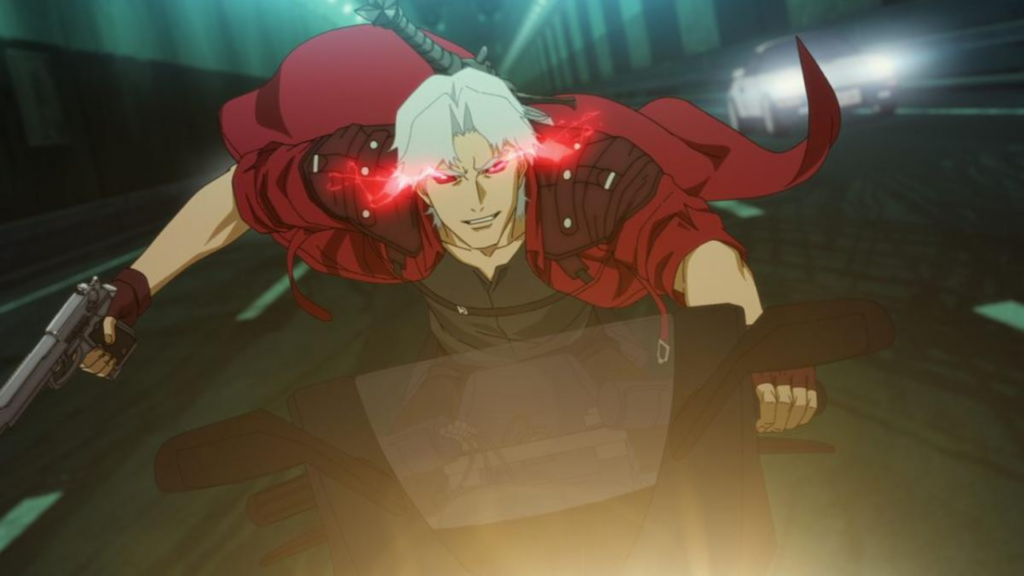
The more eagle-eyed viewers will find plenty of references to other Capcom titles in early episodes. There were also surprisingly more than one noticeable reference to Devil May Cry 2, a title that has been half-disowned by Capcom themselves (seriously it’s referenced here more than the series flashback in Devil May Cry 5). However, it does do two of Netflix’s cardinal sins; one character was literally just trailer bait (you know which one) and the story leaves on a sequel hook. Season two has been confirmed thankfully.
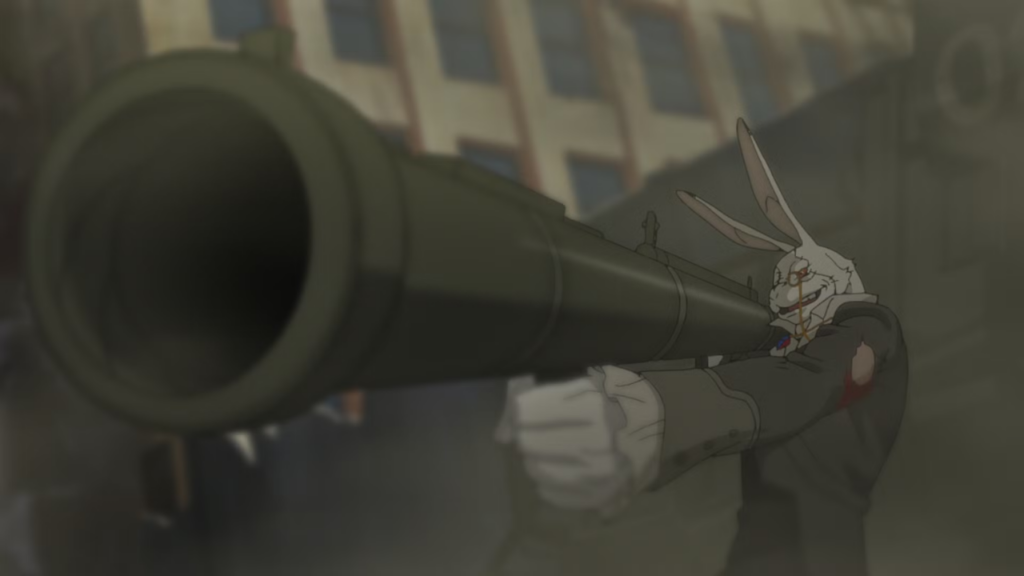
Devil May Cry (Netflix) is a mixed bag. Purists will find a lot to nit-pick here as a lot of liberties are taken with the source material, but at the same time, it can be incredibly faithful. The story looks to be heading in its own direction and not tying itself to the games’ established lore, which could end up being surprising. If you don’t think too hard and sit back and enjoy the spectacle you can find a lot to love here and if you don’t, well there’s always the classic anime.


